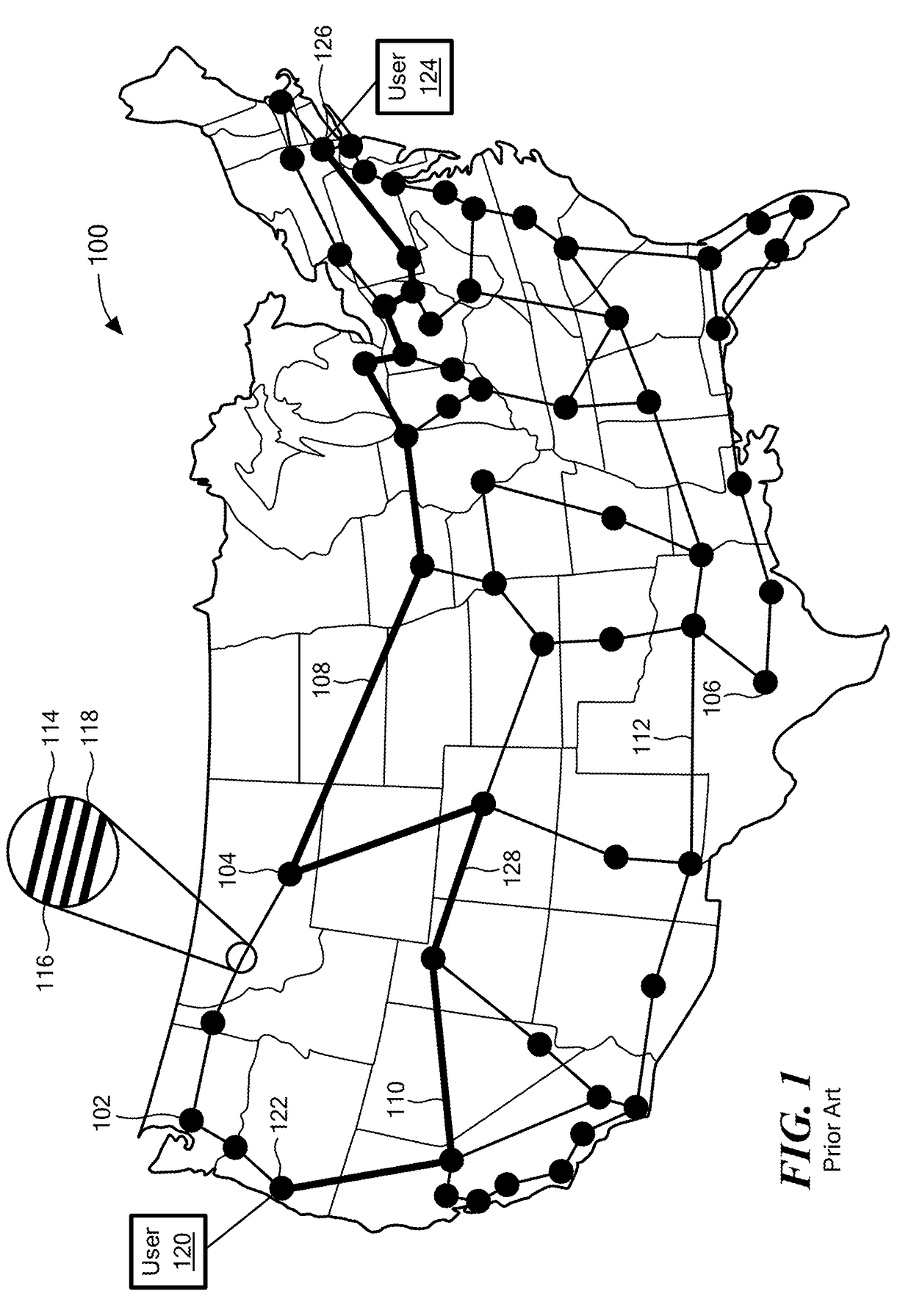Scheduled Light Path Switching in Optical Networks and Automatic Assessment of Traffic Impairments that Would Result from Adding or Deleting a Channel in a Wavelength-Division Multiplexed Optical Communication Network
a technology of automatic assessment and light path switching, applied in the field of optical networks, can solve the problems of extinguishing an illuminated wavelength, affecting traffic being carried by already-illuminated wavelengths, and using complex wavelength shifting schemes along the path
- Summary
- Abstract
- Description
- Claims
- Application Information
AI Technical Summary
Benefits of technology
Problems solved by technology
Method used
Image
Examples
Embodiment Construction
[0011]An embodiment of the present invention provides a method for scheduling a data transmission via a wavelength-division multiplexed optical communication network. The network includes a plurality of nodes and a plurality of links interconnecting the nodes. Each link includes at least one link-length optical fiber. At least some of the nodes are access nodes.
[0012]The method includes storing, in an electronic memory, information about topology of the optical communication network. The method also includes storing, in the electronic memory, information indicating: (i) which wavelengths are illuminated in ones of the link-length optical fibers, (ii) which wavelengths in ones of the link-length optical fibers are assigned to carry traffic and (iii) for each wavelength / link-length optical fiber combination that is assigned to carry traffic, a start time of an assignment and an end time of the assignment.
[0013]The method also includes receiving a first electronic signal. The first ele...
PUM
 Login to View More
Login to View More Abstract
Description
Claims
Application Information
 Login to View More
Login to View More - R&D
- Intellectual Property
- Life Sciences
- Materials
- Tech Scout
- Unparalleled Data Quality
- Higher Quality Content
- 60% Fewer Hallucinations
Browse by: Latest US Patents, China's latest patents, Technical Efficacy Thesaurus, Application Domain, Technology Topic, Popular Technical Reports.
© 2025 PatSnap. All rights reserved.Legal|Privacy policy|Modern Slavery Act Transparency Statement|Sitemap|About US| Contact US: help@patsnap.com



